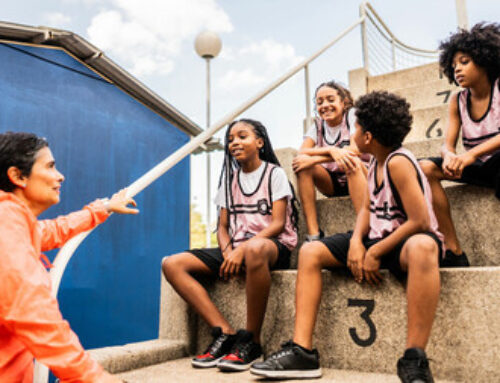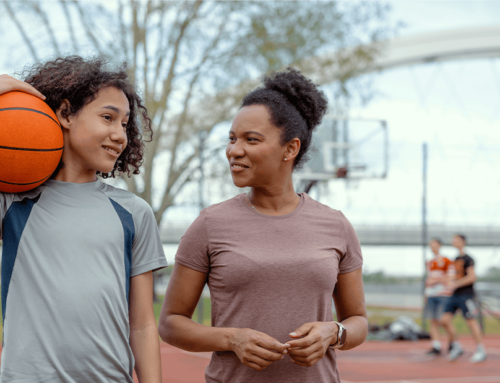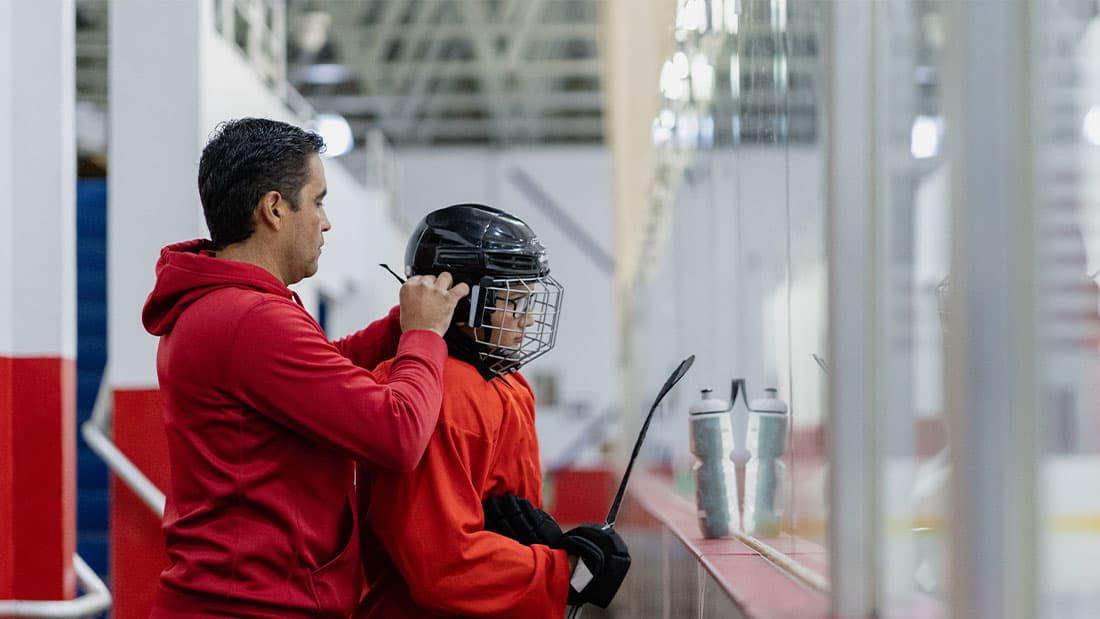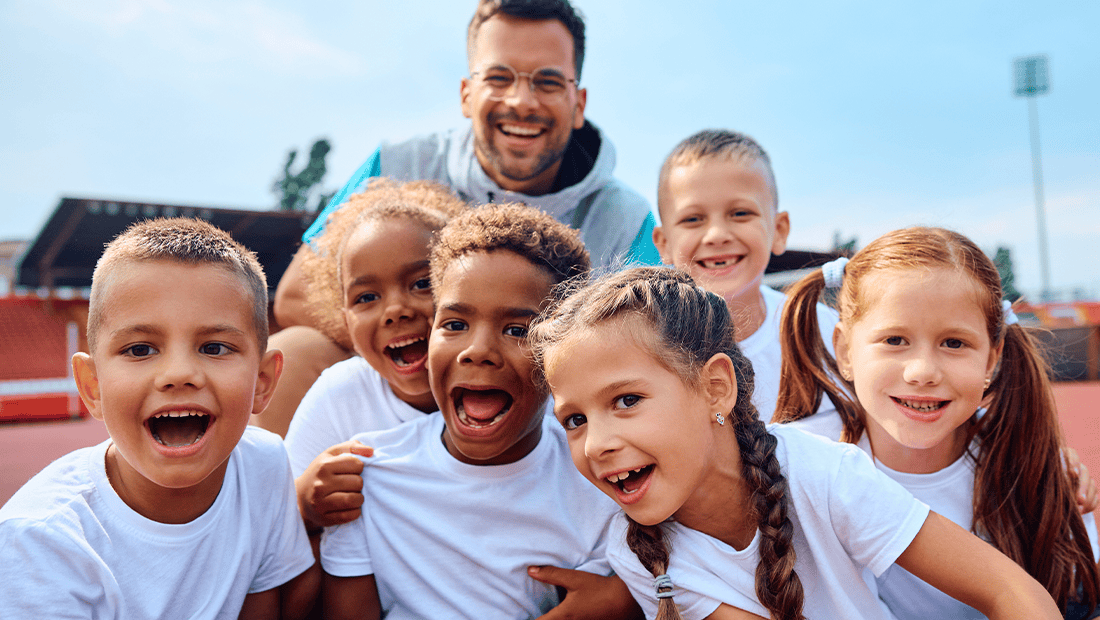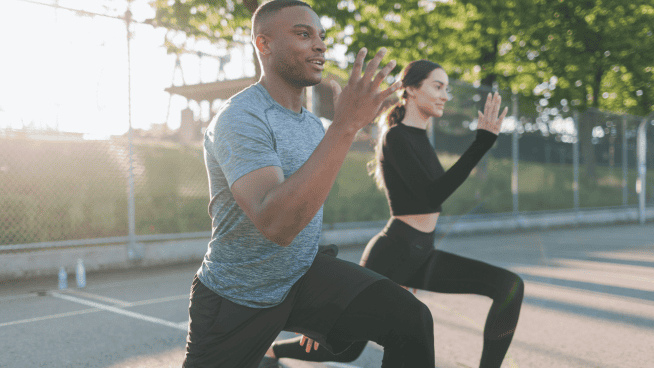The 5 Stages of Skill Development
When the season is over and the uniforms are put on the shelf, a new season begins.
The offseason is the time when the seeds of progress are planted. Each player enters the offseason with an ultimate goal of becoming a better player than they were the previous season.
Coaches put countless hours into planning, prepping and pushing their kids to reach the next level physically, mentally and emotionally. The goal is not just to get bigger, stronger and faster, but also more skilled. For example, to become a better shooter. It doesn’t matter how fast or strong or explosive you might be—if you lack skill, your game is going to quite limited.
There are many strategies a player can utilize in terms of skill development. I recommend a method that utilizes five distinct stages to help athletes better acquire a skill and prepare them to apply it in-game.
The most fundamental philosophy of this five-stage process to player development is “Form First, Pace Second.” This philosophy breaks down every skill to its smallest details. Once the basic movement has been learned, other complexities are added. Only after an athlete has demonstrated proficiency in one stage should they move to the next.
For the purpose of this article, we’ll focus on the skill of basketball shooting. Many of the below points will relate to that idea, but truth is these stages can be used to develop just about any athletic skill. The five stages are as follows:
- Stage 1: Stationary Learning
- Stage 2: North and south movement
- Stage 3: East and West Movement (angles)
- Stage 4: Scripted Defender
- Stage 5: Live Play
This diagram shows a basic progression of drills which we’ll reference throughout the article:
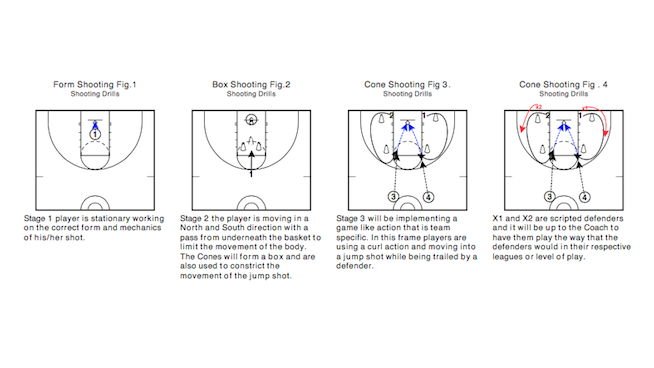
Now, let’s take a closer look at each stage.
Stage 1: Stationary Skill
In Stage 1, players will learn the skill in a stand-still position at a slow speed with no movement involved. With some skills, a player can progress from Stage 1 rather quickly, but others will take more time.
While pros still need Stage 1, this stage is primarily for players who are at a beginner level. Stage 1 practice can be great as a warm-up, with such variations as form shooting before a training session or dribbling in place to get muscles firing.
When developing the skill of basketball shooting is the goal, stationary form shooting from a short distance (figure 1 in above diagram) is a great example of a Stage 1 drill.
Stage 1: Coaching Emphasis
- Players need to ensure proper footwork and balance is being used at all times.
- Correct body posture for the skill being learned as well as correct ball placement.
- During Stage 1, coaches should be checking for correct form from start to finish of each rep.
- When form is correct, the emphasis will progress to having a game-pace aspect while maintaining the correct form that was learned.
Stage 2: Skill With Straight Line Movement
Once a skill is mastered in a stationary manner, the player will move on to executing it while moving in a north and south (straight line) direction.
For basketball shooting, this will allow the player to work on moving, catching, getting their feet set and applying the skill in a more game-like sense, but by keeping the movement straight, you ensure shoulders, eyes, feet, etc., are still square to the hoop.
You want to ensure the good habits developed in Stage 1 aren’t suddenly being lost or significantly altered when movement is added.
Everything should be very straight in this stage. Even the passes fed to the athlete should come at an angle and velocity that doesn’t force them to twist or turn away from the basket.
Stage 2 is similar to Stage 1 in that some athletes will advance to the next stage quickly, but it depends on their level of expertise and the specific skill in question. Box Shooting (figure 2 in the above diagram) is an example of a Stage 2 shooting drill.
Stage 2: Coaching Emphasis
- Players want to maintain the form that was learned in Stage 1.
- Players will concentrate on the correct footwork on the move and, in the example of basketball shooting, train catching on the move.
- Players want to maintain good balance and body posture.
- Coaches keep an eye on hand placement before the catch and stress the importance of catching the ball in a good shooting position.
- As the form is learned while moving in Stage 2, progress to using game-pace situations. For example, exploding downhill toward the basket in transition and then pulling up to shoot.
Stage 3: Skill With Angled Movement
Stage 3 is when the mechanics of a skill will begin to be strained and seriously tested. It features the additions of non-linear movement and agility.
Most players and coaches skip straight to Stage 3 when attempting to learn or teach a skill because it is where more game-like situations are presented.
For example, a player may not have the correct mechanics to shoot, but gets thrown into a shooting drill that asks players to curl into a jump shot off a down screen. Stage 3 requires not only disciplined form when shooting, but the player is required to find that form after performing a basketball type action or move such as a curl. Cone curl (figure 3 in the above diagram) shooting or spot to spot shooting are great examples of a stage 3 drill.
Stage 3: Coaching Emphasis
- Coaches should check the players’ footwork. In Stage 3 of shooting development, players tend to not get their body posture correctly squared to the basket, which is due to improper footwork.
- Be sure passes are accurate and not causing players to awkwardly contort their body during the drills.
- Coaches need to emphasize the importance of correct body posture and ball placement.
- Ensure mechanics on skills like shooting remain sound and consistent.
Stage 4: Skill Against Scripted Defenders
Stage 4 adds a coach or scripted defender to the game actions we are trying to execute.
The possibilities and progressions of this stage are endless, and the drills can become quite a bit of fun to coach and learn.
In Stage 4, a coach or player will often play defense in a pre-determined or scripted manner as to force the player to use the skill being taught. An excellent-yet-simple example of a Stage 4 shooting drill is cone curl shooting with a defender (figure 4 in the above diagram).
In Stage 4, the player learning the skill will get real game-pace practice reps working on the skills they’ve learned. Getting reps this way will reinforce the skill that is being learned and also give the player the game-like feeling of playing against a defender.
Stage 4: Coaching Emphasis
- Reinforce proper footwork, body posture, ball placement and, in this case, shooting form.
- Players will need to make sure that their form is tight and their body is in a position to be explosive.
- Make sure your shooters keep their eyes on their target and do not get distracted by the defender.
- Players will also need to work on game pace of the action they are performing while maintaining correct form.
- Coaches will progress Stage 4 with different actions, multiple reads for players, and more defenders. The possibilities in this stage are endless.
Stage 5: Live Play Skill
Stage 5 is where the skill will be put to the test in live game-like situations. Players are put into drills where they will have to determine the correct time to use the skills they’ve learned or make an alternative read. 2v2 Cone Curl Shooting is an example of a very simple yet effective Stage 5 drill. Players are put into position to make reads off a down screen action.
Stage 5: Coaching Emphasis
- With more distractions and action going on, players will tend to be more timid and fearful of making a mistake. Coaches will need to emphasize game pace, footwork, body posture and quick decisions.
- Players will initially tend to change their form during live play, so coaches should emphasize keeping their form correct.
- Players will need to be ready to make a play with correct body posture and hand placement. This will lead to quicker decisions.
- Younger players tend to get more benefit from playing small-sided games. In basketball, this can mean 1v1, 2v2 or 3v3 as opposed to a ton of traditional 5v5.
Coaches and players alike spend countless hours pushing themselves to reach the next level physically, mentally and emotionally. But many times they don’t see the fruits of their labor. When it comes to skill development, a lot of these flaws relate to a lack of fundamentals or the act of skipping over stages before they’ve been fully mastered. Building skill takes time, but when progressed right and approached with patience, the results can be magnificent.
Photo Credit: SrdjanPav/iStock
READ MORE:
RECOMMENDED FOR YOU
MOST POPULAR
The 5 Stages of Skill Development
When the season is over and the uniforms are put on the shelf, a new season begins.
The offseason is the time when the seeds of progress are planted. Each player enters the offseason with an ultimate goal of becoming a better player than they were the previous season.
Coaches put countless hours into planning, prepping and pushing their kids to reach the next level physically, mentally and emotionally. The goal is not just to get bigger, stronger and faster, but also more skilled. For example, to become a better shooter. It doesn’t matter how fast or strong or explosive you might be—if you lack skill, your game is going to quite limited.
There are many strategies a player can utilize in terms of skill development. I recommend a method that utilizes five distinct stages to help athletes better acquire a skill and prepare them to apply it in-game.
The most fundamental philosophy of this five-stage process to player development is “Form First, Pace Second.” This philosophy breaks down every skill to its smallest details. Once the basic movement has been learned, other complexities are added. Only after an athlete has demonstrated proficiency in one stage should they move to the next.
For the purpose of this article, we’ll focus on the skill of basketball shooting. Many of the below points will relate to that idea, but truth is these stages can be used to develop just about any athletic skill. The five stages are as follows:
- Stage 1: Stationary Learning
- Stage 2: North and south movement
- Stage 3: East and West Movement (angles)
- Stage 4: Scripted Defender
- Stage 5: Live Play
This diagram shows a basic progression of drills which we’ll reference throughout the article:

Now, let’s take a closer look at each stage.
Stage 1: Stationary Skill
In Stage 1, players will learn the skill in a stand-still position at a slow speed with no movement involved. With some skills, a player can progress from Stage 1 rather quickly, but others will take more time.
While pros still need Stage 1, this stage is primarily for players who are at a beginner level. Stage 1 practice can be great as a warm-up, with such variations as form shooting before a training session or dribbling in place to get muscles firing.
When developing the skill of basketball shooting is the goal, stationary form shooting from a short distance (figure 1 in above diagram) is a great example of a Stage 1 drill.
Stage 1: Coaching Emphasis
- Players need to ensure proper footwork and balance is being used at all times.
- Correct body posture for the skill being learned as well as correct ball placement.
- During Stage 1, coaches should be checking for correct form from start to finish of each rep.
- When form is correct, the emphasis will progress to having a game-pace aspect while maintaining the correct form that was learned.
Stage 2: Skill With Straight Line Movement
Once a skill is mastered in a stationary manner, the player will move on to executing it while moving in a north and south (straight line) direction.
For basketball shooting, this will allow the player to work on moving, catching, getting their feet set and applying the skill in a more game-like sense, but by keeping the movement straight, you ensure shoulders, eyes, feet, etc., are still square to the hoop.
You want to ensure the good habits developed in Stage 1 aren’t suddenly being lost or significantly altered when movement is added.
Everything should be very straight in this stage. Even the passes fed to the athlete should come at an angle and velocity that doesn’t force them to twist or turn away from the basket.
Stage 2 is similar to Stage 1 in that some athletes will advance to the next stage quickly, but it depends on their level of expertise and the specific skill in question. Box Shooting (figure 2 in the above diagram) is an example of a Stage 2 shooting drill.
Stage 2: Coaching Emphasis
- Players want to maintain the form that was learned in Stage 1.
- Players will concentrate on the correct footwork on the move and, in the example of basketball shooting, train catching on the move.
- Players want to maintain good balance and body posture.
- Coaches keep an eye on hand placement before the catch and stress the importance of catching the ball in a good shooting position.
- As the form is learned while moving in Stage 2, progress to using game-pace situations. For example, exploding downhill toward the basket in transition and then pulling up to shoot.
Stage 3: Skill With Angled Movement
Stage 3 is when the mechanics of a skill will begin to be strained and seriously tested. It features the additions of non-linear movement and agility.
Most players and coaches skip straight to Stage 3 when attempting to learn or teach a skill because it is where more game-like situations are presented.
For example, a player may not have the correct mechanics to shoot, but gets thrown into a shooting drill that asks players to curl into a jump shot off a down screen. Stage 3 requires not only disciplined form when shooting, but the player is required to find that form after performing a basketball type action or move such as a curl. Cone curl (figure 3 in the above diagram) shooting or spot to spot shooting are great examples of a stage 3 drill.
Stage 3: Coaching Emphasis
- Coaches should check the players’ footwork. In Stage 3 of shooting development, players tend to not get their body posture correctly squared to the basket, which is due to improper footwork.
- Be sure passes are accurate and not causing players to awkwardly contort their body during the drills.
- Coaches need to emphasize the importance of correct body posture and ball placement.
- Ensure mechanics on skills like shooting remain sound and consistent.
Stage 4: Skill Against Scripted Defenders
Stage 4 adds a coach or scripted defender to the game actions we are trying to execute.
The possibilities and progressions of this stage are endless, and the drills can become quite a bit of fun to coach and learn.
In Stage 4, a coach or player will often play defense in a pre-determined or scripted manner as to force the player to use the skill being taught. An excellent-yet-simple example of a Stage 4 shooting drill is cone curl shooting with a defender (figure 4 in the above diagram).
In Stage 4, the player learning the skill will get real game-pace practice reps working on the skills they’ve learned. Getting reps this way will reinforce the skill that is being learned and also give the player the game-like feeling of playing against a defender.
Stage 4: Coaching Emphasis
- Reinforce proper footwork, body posture, ball placement and, in this case, shooting form.
- Players will need to make sure that their form is tight and their body is in a position to be explosive.
- Make sure your shooters keep their eyes on their target and do not get distracted by the defender.
- Players will also need to work on game pace of the action they are performing while maintaining correct form.
- Coaches will progress Stage 4 with different actions, multiple reads for players, and more defenders. The possibilities in this stage are endless.
Stage 5: Live Play Skill
Stage 5 is where the skill will be put to the test in live game-like situations. Players are put into drills where they will have to determine the correct time to use the skills they’ve learned or make an alternative read. 2v2 Cone Curl Shooting is an example of a very simple yet effective Stage 5 drill. Players are put into position to make reads off a down screen action.
Stage 5: Coaching Emphasis
- With more distractions and action going on, players will tend to be more timid and fearful of making a mistake. Coaches will need to emphasize game pace, footwork, body posture and quick decisions.
- Players will initially tend to change their form during live play, so coaches should emphasize keeping their form correct.
- Players will need to be ready to make a play with correct body posture and hand placement. This will lead to quicker decisions.
- Younger players tend to get more benefit from playing small-sided games. In basketball, this can mean 1v1, 2v2 or 3v3 as opposed to a ton of traditional 5v5.
Coaches and players alike spend countless hours pushing themselves to reach the next level physically, mentally and emotionally. But many times they don’t see the fruits of their labor. When it comes to skill development, a lot of these flaws relate to a lack of fundamentals or the act of skipping over stages before they’ve been fully mastered. Building skill takes time, but when progressed right and approached with patience, the results can be magnificent.
Photo Credit: SrdjanPav/iStock
READ MORE:

